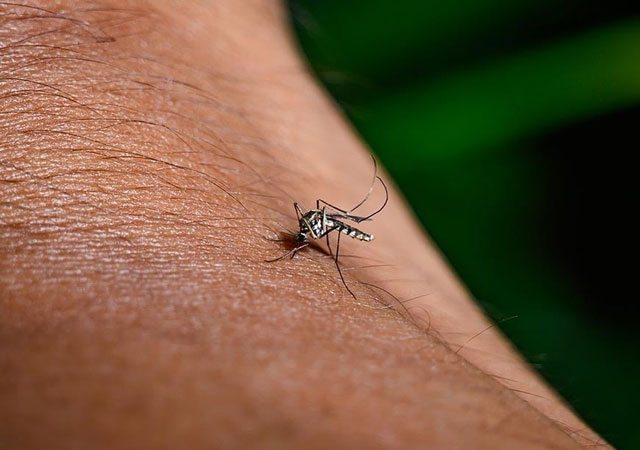Daijiworld Media Network – New Delhi
New Delhi, Nov 6: Dengue cases are not only increasing but also spreading to new regions across India, including rural and peri-urban areas previously unaffected by the disease. The mosquito-borne infection, caused by the Dengue Virus (DENV) and transmitted mainly through Aedes aegypti and Aedes albopictus mosquitoes, continues to pose a growing public health challenge.
According to the World Health Organisation (WHO), India remains among the 30 most dengue-endemic countries globally in 2025. Experts warn that as dengue expands beyond cities, surveillance systems designed primarily for urban settings are proving inadequate.

Currently, there is no specific treatment for dengue, and medical care remains limited to supportive therapy. Two vaccines — CYD-TDV (Dengvaxia) and TAK-003 (Qdenga) — have been licensed for prevention. However, WHO guidelines restrict Dengvaxia use only to those previously infected (seropositive individuals), while Qdenga is recommended for children aged 6–16 years in regions with high transmission rates. India’s first indigenous vaccine, DengiAll, is in Phase III clinical trials.
Given the limited reach of vaccines and the absence of targeted treatments, experts emphasise that entomological surveillance — monitoring and controlling mosquito populations — remains the cornerstone of dengue prevention. This approach forms a key part of India’s Integrated Vector Management (IVM) strategy. Yet, due to resource constraints, staff shortages, and weak coordination between local and national bodies, this crucial system remains underutilised.
Entomological surveillance involves collecting data on mosquito populations to predict and prevent outbreaks. It includes traditional larval and pupal surveys, which are cost-effective and widely implemented, though they offer limited insights into adult mosquito activity — the stage most responsible for transmission.
Advanced surveillance methods, such as adult mosquito trapping and insecticide resistance testing, provide more accurate data and can guide targeted control strategies. Molecular tools, including xenomonitoring to detect viruses in wild mosquitoes, show promise for early warning systems but remain restricted to research labs due to cost and infrastructure challenges.
The National Centre for Vector Borne Diseases Control (NCVBDC) oversees policies, training, and standards under the National Vector Borne Diseases Control Programme (NVBDCP). The Indian Council of Medical Research (ICMR) leads research initiatives, while state health departments and urban local bodies handle implementation.
However, experts point out that surveillance efforts often intensify only during outbreaks, rather than being maintained year-round. Coordination between state and national agencies, municipalities, and laboratories remains inconsistent. A lack of trained entomologists and inter-departmental convergence further weakens response efficiency.
Studies in Odisha and Rajasthan have also revealed rising insecticide resistance among Aedes mosquitoes, raising concerns about the long-term effectiveness of current control measures like fogging and spraying, which are often poorly supervised.
Health officials and experts agree that strengthening continuous, data-driven entomological surveillance — along with public awareness and coordinated intersectoral action — is vital to curb dengue’s growing threat and prevent future outbreaks.